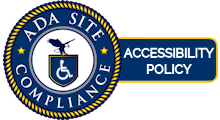 As the weather starts to cool off in many U.S. cities and towns, we are still in the heart of the late summer and fall allergy season. That means lots of mold spores, ragweed, and other weed pollens — and a great deal of allergy misery.
As the weather starts to cool off in many U.S. cities and towns, we are still in the heart of the late summer and fall allergy season. That means lots of mold spores, ragweed, and other weed pollens — and a great deal of allergy misery.
Here are some simple and practical allergy tips to help you start fighting fall allergies:
Learn the Symptoms. Each year patients have the same question: How can I tell whether I have an allergy or a cold/sinus infection? In general, cold symptoms come on rapidly, while allergies occur with a pattern of exposure (after dusting, raking leaves, or pet exposure). Also, “itchiness” is often present with allergies.
Remember your allergy medications won’t work if you have sinusitis or a bad head cold. After a careful examination and some simple tests, your doctor can help determine whether it’s an allergy or cold/sinus infection.
Watch What You Eat. It’s not just what’s in the air that can wreak havoc on your seasonal allergies. What you eat can have an impact as well. Watch out for fresh foods including melon, watermelon, cantaloupe, cucumber, banana, chamomile tea, and zucchini. Up to one third of ragweed allergy sufferers can actually experience worsening of their symptoms (itchiness of the mouth, tongue, and throat) with these foods. Although Echinacea may be used to fight “colds and viruses,” it can worsen your seasonal allergies if you are sensitive to ragweed and weeds, as a result of a cross-reaction.
Minimize Indoor Allergens. As you spend more time indoors this fall, you may experience a worsening of your allergies. Exposure to indoor allergens, particularly pets, mold spores, and dust mites can ratchet up your suffering. Ten percent to 15 percent of allergic individuals are allergic to their pets and may develop respiratory symptoms during the early to mid fall as a result of increased indoor exposure. Have a plan in place, such as HEPA type vacuum and/or HEPA central and/or room air purification, and possibly a dehumidifier if your symptoms are triggered by mildew and mold conditions.
Know Your Indoor Moisture Levels. Monitor your indoor humidity level (amount of moisture in the air) and attempt to keep it 50 percent or lower to avoid triggering mold and dust mite allergies. A low-cost hygrometer (less than $10) can help ensure optimal indoor humidity levels in your home. Too many indoor houseplants can also add to increased indoor humidity as a result of added moisture and molds.
Wash It Out. It’s important to wash any fall or winter clothing that has been in storage where dust and molds may have accumulated on them. Wash them thoroughly before wearing them. Keep off-season pillows, blankets, and even kid’s “plush” toys in an enclosed container to prevent additional indoor allergens from accumulating.
Stay tuned for more practical fall allergy survival tips — but for now, start to reduce those pesky allergy symptoms.






















Leave a Reply